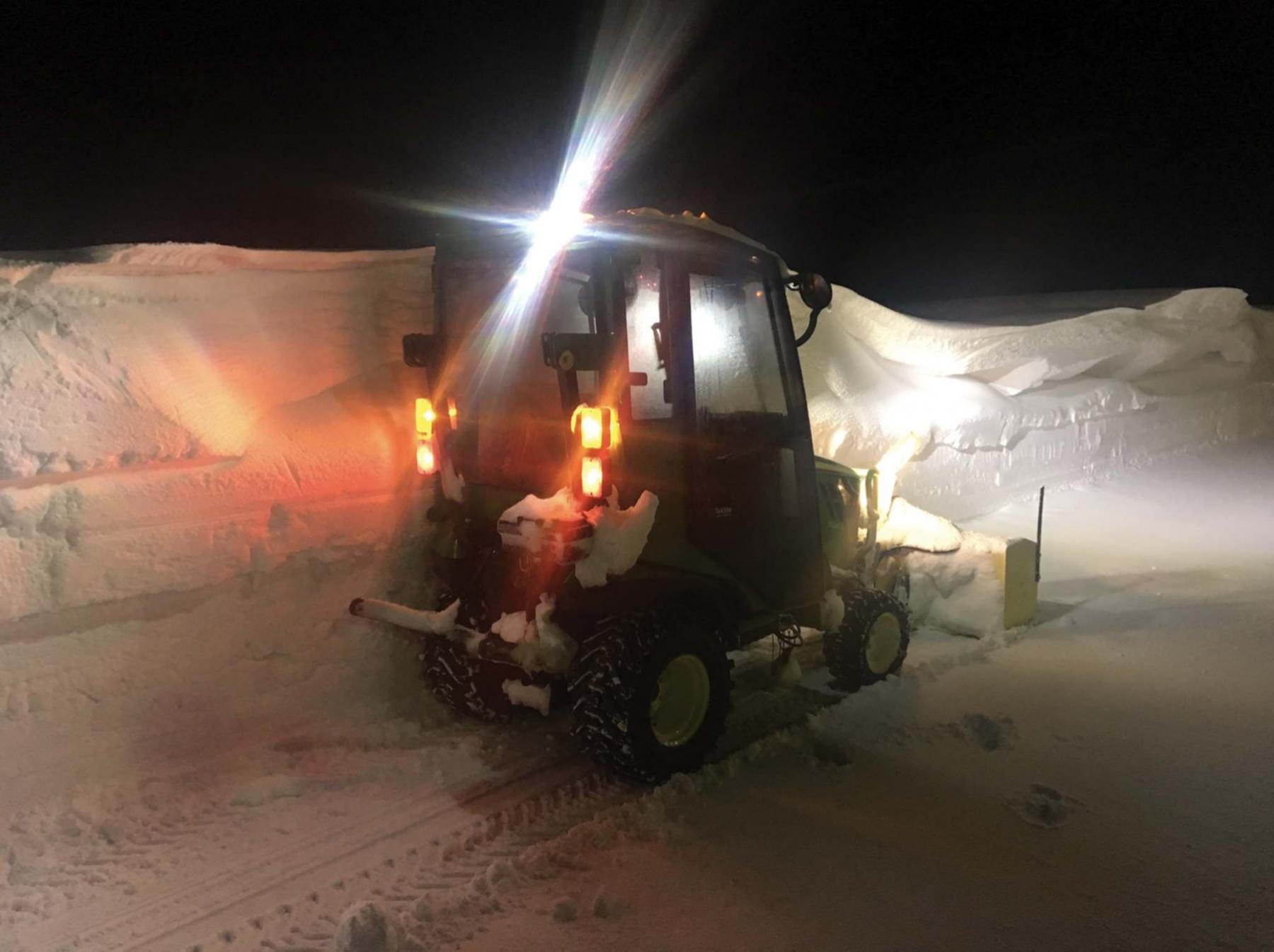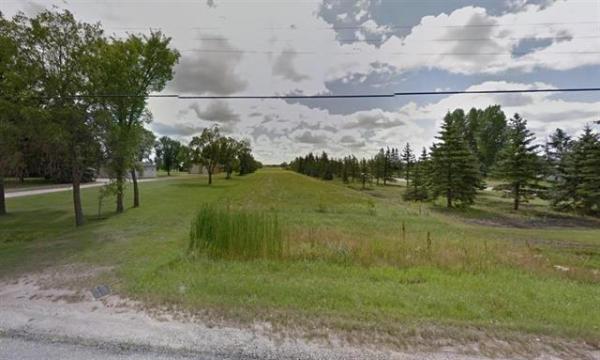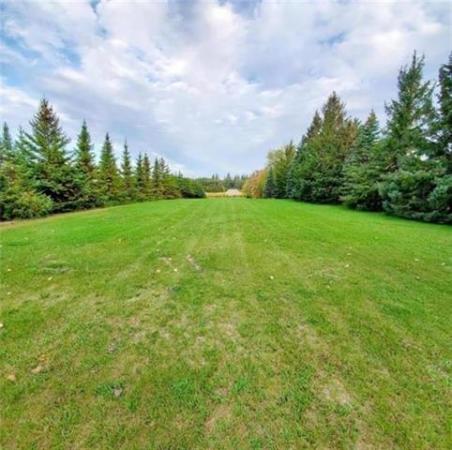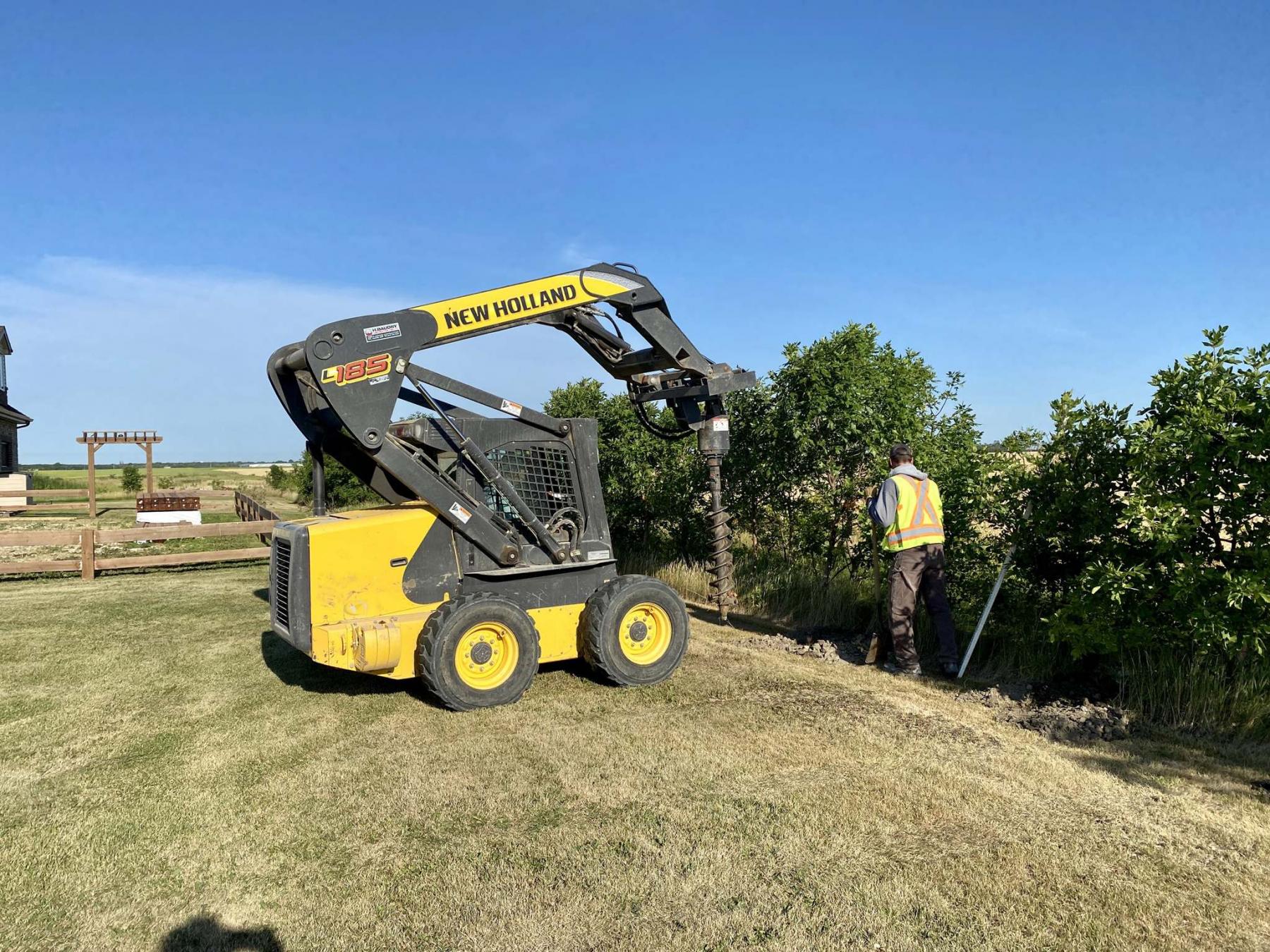
The crew from H. Baudry Construction uses a nine-inch diameter, four-foot long auger bit to drill 46 post holes in record time using their New Holland L185.
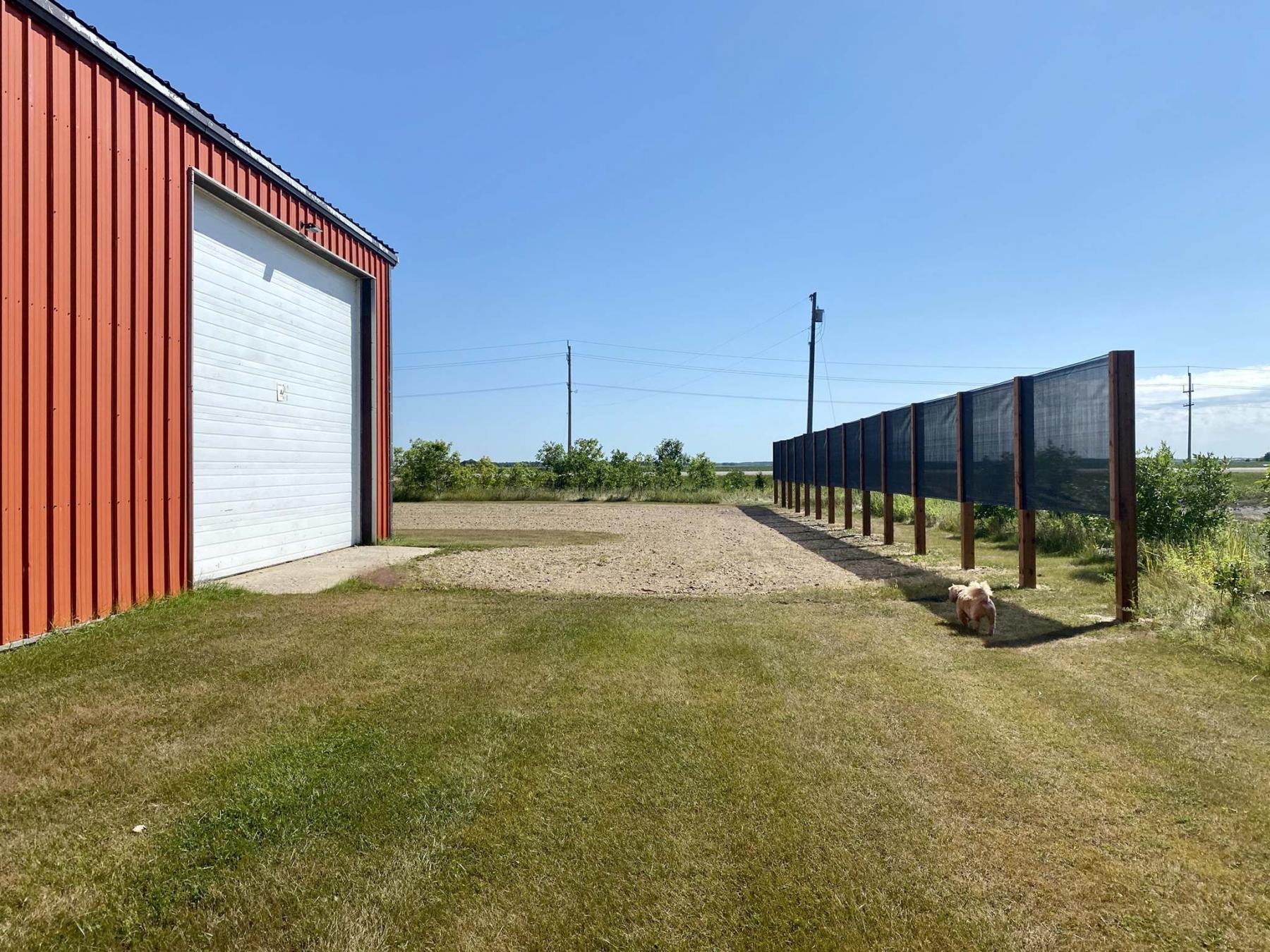
The 104-foot fence section at the southeast corner of the shed to near the highway will (hopefully) greatly diminish the aggression of drifts that form across the driveway on the opposing side, from a prevailing south wind.
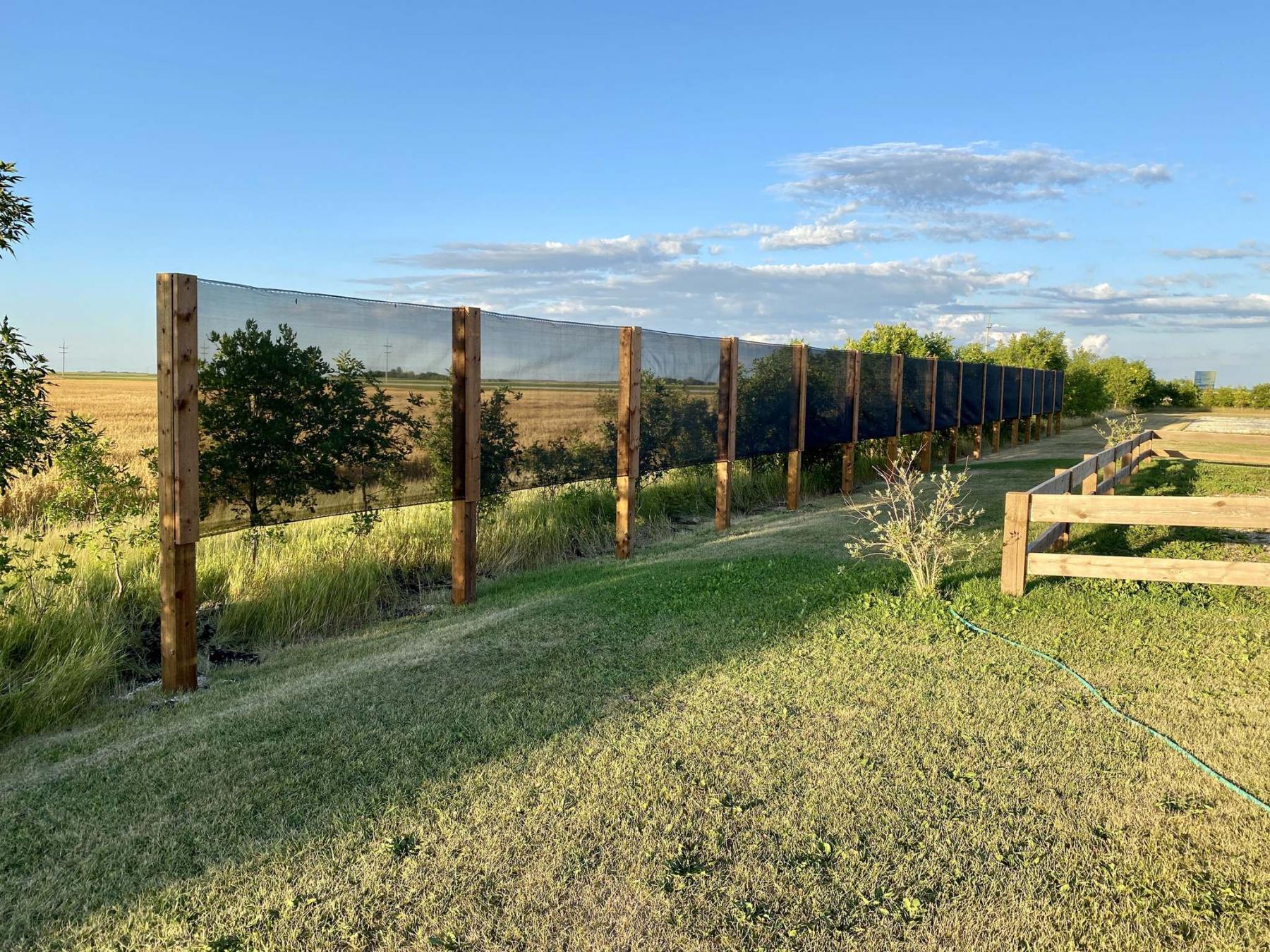
Marc LaBossiere / Winnipeg Free Press
Twelve-foot six-by-six posts are sunk four feet into limestone, and the top five feet of the exposed post is fitted with five-foot wide mesh capable of reducing wind speeds by 70-80 per cent.
For nearly 17 years, I have thoroughly enjoyed living at ‘Boss Ranch’, in the great wide-open; the peace and tranquility, the scenic views, and of course all that space – what’s not to love? There is one glitch to this love affair however, an inconvenience that induces a great deal of annual anxiety – winter’s drift-instigating winds. This summer, after 12 years of diligent planning, I’m hoping permanent wind barriers strategically positioned along sections of my property lines may reduce some of my winter stress.
To me, clearing snow in the winter is tantamount to mowing the lawn during spring, summer, and fall – it can be rather enjoyable. How it differs, is key. There are times in the dead of winter when the winds are howling so fast, that despite my best efforts, it’s nearly impossible to keep up with the drifting snow accumulation which on occasion renders the property impassable and inaccessible. During the worst of those times, I’ll simply await winter’s fury to calm itself before calling in the big boys with their big equipment to clear my yard, pushing huge volumes of snow along the north and south property lines creating snow berms that in turn block the wind from creating more impenetrable drifts during Mother Nature’s next tantrum. The problem is, these snow hills can only be created once there’s enough snow on the property, and there’s only enough snow once the property gets snowed in – a vicious circle.
Fortunately, after years of monitoring how the drifts form on the property based on prevailing winds, a wind-fence design has been finally implemented. The fence design consists of six-by-six, 12-foot posts counter-sunk four feet into limestone, whereby the upper five of the eight-feet of the exposed posts anchor a wind-reduction mesh product, engineered specifically to reduce both land erosion and snow drifting. The rolls of mesh required were ordered from Wind & Sun Protection Inc, a company situated in Alberta. The West Fraser lumber was obtained through my commercial crew at RONA on Kenaston. Once all the materials were on site, the fence installation process could begin.
It is always prudent to contact Click Before You Dig, when creating deep holes on the property. Once clearances were received from both BellMTS and MB Hydro, holes could be safely drilled. There are three fence sections to the wind fence property layout; along the south property line, a 120-foot fence between the house the shed and another 104-foot fence on the east side of the shed nearing the highway. Along the north property line, a 120-foot fence from the house matches the south-side fence. A total of 46 posts were required, and the boys at H. Baudry Construction 1980 Ltd were up to the challenge. Arriving with their New Holland L185 equipped with a four-foot long, nine-inch diameter auger bit, the crew wasted no time creating holes where I had systematically pre-marked the ground with orange ribbon. By the end of auger day, the holes had been drilled and the boys had graciously placed the six-by-six posts into the holes to avoid any depth issues that could occur if one or more holes experienced a partial cave-in. A five-yard load of three-quarter down limestone from Barkman Cartage had been dumped on the driveway near the shed, to serve as the set material for the posts. To hasten the hardening of the limestone, each post base was thoroughly watered once it had been properly leveled. The posts were then left alone for about a week, to guarantee rigidity.
Before the wind mesh was introduced, a level string-line was used to mark and cut each post to the intended eight-foot height. Once this was achieved, it was time to begin the mesh installation process. At the outer posts for all three fence lines, a five-foot long, one-inch wide aluminum flat bar would be used to wrap the ends of mesh to prevent slippage. As such, the flat bar with mesh wrapped around it is first secured to the initial outer post. Then one by one, the mesh is mounted to the each successive post using three-quarter inch staples, stretching it taut at every section to prevent any sagging between posts. And at the last post, the mesh end is again wrapped around another aluminum flat bar to prevent slippage, and subsequently secured to that end post. As a final and partially aesthetic step, five-foot two-by-sixes were affixed onto the mesh-side of every post using five, four-inch TimberLok lag screws per post — this not only covers the mesh on the post, it forces the mesh to only flex between the posts.
The gap below the mesh allows the wind and snow to occur as usual during the first month or two of winter. Once there has been an accumulation of snow, the upper five feet of mesh should help reduce the effects of the wind, thereby minimizing the resulting drifts, that cause so much grief.
This project was years in the making, and I suppose ‘permanent snow-fencing’ best describes its purpose. It is my hope that the North-side fence line curtails the concave drift that occurs along the driveway nearest the house, and that both South-side fence lines diminish the aggressive drift-forming nature of a South wind howling around the shed. As mentioned, I really don’t mind clearing snow, and often enjoy it. It is that potential of being completely snowed-in (or out) during winter’s fury, that drives me crazy. So, fingers crossed – only time will tell if the new wind mesh fencing can keep those nasty drifts at bay.
BossEnterprise@outlook.com

